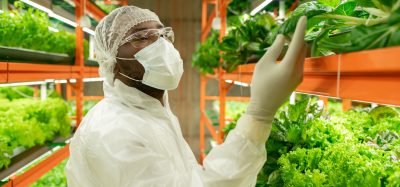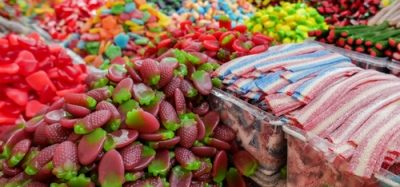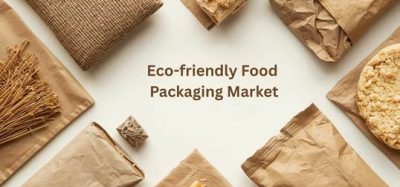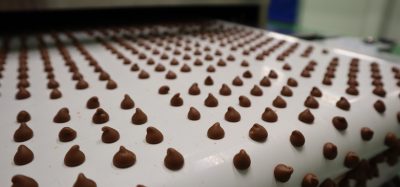How the phase-out of synthetic food dyes is reshaping the colour additives industry
Posted: 23 September 2025 | Yuga Raut | No comments yet
Industry expert Yuga Raut reflects on the impact of the US initiative to phase out the use of artificial colourants in the food and beverage industry.
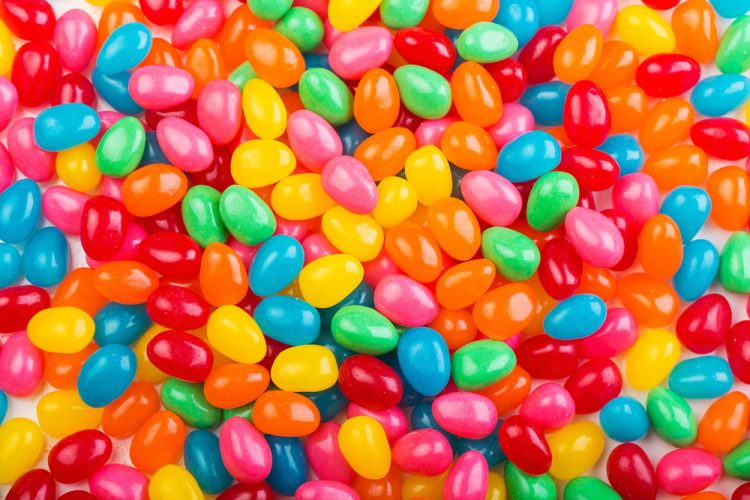

The ongoing push to phase out petroleum-based synthetic dyes in the US is driving significant change across the global food colourants market. In April 2025, the US Food and Drug Administration (FDA), under the Department of Health and Human Services (HHS), set an important initiative encouraging food manufacturers to voluntarily remove key synthetic colour additives –Red 40, Yellow 5 and Blue 1 – from the US food supply by the end of 2026 or early 2027.
The phase-out of petroleum-based synthetic food dyes is more than a regulatory milestone; it is a material transition and a catalyst for deep innovation.”
Though not a formal regulatory ban, the FDA has signalled it may leverage a range of policy tools to accelerate this transition. This move, combined with the already finalised revocation of Red 3 for food use, underscores shifting regulatory priorities and intensifying consumer demand for clean-label products, with broad repercussions throughout petrochemical intermediates, food additive systems and natural ingredient supply chains.
The global food colourant market, valued at approximately $3.5 billion in 2023, is already seeing notable transformation driven by regulation as well as consumer trends. Natural food colours now account for 65 percent of the market by value. This serves to illustrate their premium pricing and consumer appeal, although synthetic dyes still dominate by volume due to lower cost, higher stability and minimal dosage requirements. Despite this, natural colourants are growing at a faster rate – 5.1 percent CAGR versus 3.5 percent for synthetics. This hints at a long-term shift towards cleaner labelling and plant-based ingredients.
For years, synthetic dyes such as Red 40, Yellow 5, Yellow 6, Blue 1, Blue 2 and Green 3 have been staples in mass-market food formulations. These are produced from aromatic hydrocarbon feedstocks such as benzene and naphthalene through sulphonation, nitration and azo coupling reactions. Their unmatched cost efficiency, colour intensity and functional stability under varied pH, light and thermal conditions, alongside their consistent performance and low-dose effectiveness made them the default for global food and beverage manufacturers.
Natural colours enter a demanding technical arena
The FDA has already started the procedures to revoke the authorisation of Citrus Red 2 and Orange B, two rarely used synthetic dyes, and has formally delisted Red 3 from food use, with enforcement deadlines set for 15 January, 2027 (foods) and 18 January, 2028 (drugs and cosmetics). Alongside this, the agency has fast-tracked the approval of several natural colourants, including Galdieria extract (blue), butterfly pea flower extract and calcium phosphate. These additions show a regulatory intent to expand the functional palette of approved natural options.
This shift, however, brings notable technical challenges. Compared to synthetic dyes, natural pigments, sourced from plants, algae or microbial sources, are usually less stable under light, heat and variable pH conditions. Anthocyanins (from berries and purple vegetables) can undergo dramatic hue changes with changing pH. Meanwhile, carotenoids (from carrots, annatto and paprika) are prone to oxidative degradation. Delivering equivalent brightness, shelf stability and manufacturing flexibility therefore requires major advances in stabilisation, microencapsulation and emulsification technologies.
The performance gap is particularly evident in high-intensity processing environments, such as for baked goods or carbonated beverages. In these applications, synthetic dyes continue to outperform in stability and longevity, though innovations in biotechnology and encapsulation are helping to close that gap.
Escalating costs and supply chain complexity
Cost is another major stumbling block. Synthetic dyes have historically cost 15 to 30 dollars per kg at scale, but high-purity natural colourants can range from 80 to over 200 dollars per kg, depending on source, yield and market volatility. Agricultural sourcing introduces further variability in pigment composition and seasonal supply. This variability contrasts sharply with the uniformity and scalability of petrochemical production chains.
As a response, the global colour additive value chain is undergoing rapid reconfiguration, with leading natural pigment companies investing in vertical integration. Spanning crop cultivation to extraction and formulation, businesses are deploying innovations such as enzyme-assisted extraction, supercritical CO₂ processing and microencapsulation to improve purity and stability. Copigmentation strategies are also being studied to improve colour vibrancy and resistance to degradation in complex food matrices.
Biotechnology is playing a growing role in this transformation. Companies like BASF, Givaudan, DSM and Sensient are investing in microbial fermentation as well as enzymatic synthesis to produce colourants such as phycocyanin, gardenia red, riboflavin and carotenoids with improved scalability and functional consistency. These techniques not only reduce reliance on traditional agricultural inputs, but also enable greater control over pigment purity, shade reproducibility and regulatory compliance.
Strategic moves from key industry players
This regulatory pivot is accelerating reformulation efforts across key food and beverage sectors. The confectionery industry is among the most affected. Companies like HARIBO are already on the way to transitioning many product lines to natural alternatives sourced from beetroot, safflower, spirulina and radish extract, while General Mills has committed to eliminating synthetic dyes in US school-targeted foods by mid-2026. However, PepsiCo and other global players have confessed that full international reformulation may need several more years owing to the complexity of scaling consistent natural colours across markets.
This transformation is being most keenly felt in major application categories. The bakery (30 percent), beverage (24 percent), processed meat (13 percent) and confectionery (18 percent) sectors are the largest consumers of food colourants and among these, dairy products and nutritional supplements have seen the most progress towards natural adoption. Processed meats and confectionery however remain reliant on synthetics due to more demanding technical and sensory performance requirements, while plant-based ‘meat’ products are shifting to colourants like lycopene, apocarotenal and betalain, as this is a part of the broader clean-label movement.
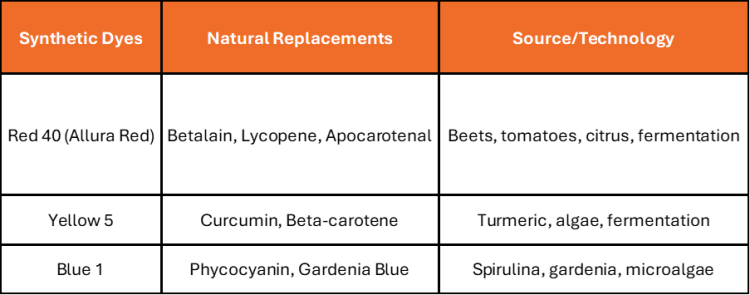

Table showing natural replacements for synthetic food dyes
Sustainability will shape the next competitive landscape
While natural pigments sit well with consumer preferences for clean-label products, they are not inherently more sustainable. Agricultural production of pigment-rich crops requires the careful balance of land, water, fertiliser and energy inputs. Also, extraction processes must lessen the use of hazardous solvents to maintain a genuine sustainability edge. Those companies investing in green extraction methods, transparent sourcing and regenerative agriculture will likely earn regulatory favour as well as consumer trust, as sustainability scrutiny increases.
A materials transition that will define market leaders
The phase-out of petroleum-based synthetic food dyes is more than a regulatory milestone; it is a material transition and a catalyst for deep innovation covering the global food and chemical industries. It marks a convergence of regulatory reform, consumer advocacy and environmental accountability. Success will rely on tight collaboration across agriculture, food science, bioprocessing and chemical engineering, as the race to develop robust, scalable and high-performance natural colour systems accelerates.
As the December 2026 deadline draws near, the transition is no longer theoretical. For brand owners, ingredient suppliers and specialty chemical firms alike, this is not just a compliance effort; it is a defining moment to lead in one of the most visible, emotionally resonant and technically demanding aspects of modern food formulation.
As the industry adapts to a post-synthetic future, join tomorrow’s New Food webinar on spectroscopic analysis of food dyes to explore practical solutions for ensuring colour consistency – sign up now.
Meet the author


Yuga Raut (Associate Consultant, Food & Nutrition) is associated with ChemBizR, a business research and consulting partner of global chemical companies, collaborating on interesting aspects of the food, nutrition and beverage industry, along with its other business wings. ChemBizR works towards addressing companies’ critical business challenges and strategic growth initiatives to help them transform their enterprise for sustainable growth in a highly competitive and rapidly evolving environment.



